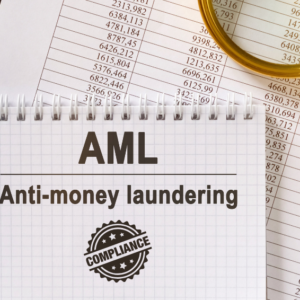Many online businesses focus their resources on creating a great website, optimizing their content to achieve a high search engine ranking, perfecting their social media game and enticing new customers to see what they have to offer. All of those things are great, but they don’t add up to a recipe for sustainable business success.
What comes after a sale is equally important, and it’s often where eCommerce businesses fall down. After the initial rush of sales subsides, companies need to have a strategy in place to ensure that they come back for more. That’s where customer retention comes in handy, and it’s something that every online business needs to plan for.
If you don’t have customer retention strategies in place, here are some useful pointers that will put you on the right track.
Follow Up Every Sale with an Email
When a customer has submitted their payment details and their products have been dispatched, that shouldn’t be the end of their relationship with your firm. In fact, it should be just the beginning.
It’s easy for customers to forget about where they bought their latest shoes, or which company supplied their fishing gear. With so much choice on the market, they won’t automatically think of you when they need to make a repeat purchase, so give them a reason to remember you. Include an automated thank you response, and inform them about discounts or deals that you offer to repeat purchasers. Show them that you appreciate their custom, and invite them to return. Even if 10 percent of them take up the offer, it’s well worth the effort.
Turn Customer Feedback into Repeat Purchases
Sometimes customers will feel the need to submit their opinions to your staff. Whether their impressions were good or bad, this is always something that should be welcomed.
Try to reply to email queries and Twitter messages about your products, and show that you are a responsive company that prioritizes the interests of your customers. Don’t get into extended conversations on Twitter, but do provide the brief, useful responses (and never lose your cool).
If you receive useful feedback, why not highlight it on your site or blog? Customers love to be valued and are much more likely to engage with companies that have the ability to listen. It’s all about humanizing your business, not remaining walled off and cold.
Reward Your Customers for Their Loyalty
If you haven’t created a loyalty scheme, it’s probably time to consider one. At the very least, try to offer discounts to customers who make more than one purchase, and advertise the fact that you offer such deals on your checkout page.
Loyalty schemes don’t just deliver a better deal to customers. They also help to nurture a community of people who feel connected to what you do and the products you sell.
Promote your discounts or membership scheme via social media, blog about it, include leaflets with your shipments and create videos – whatever it takes to persuade customers to join up.
Create a Comprehensive Customer Database
Online sellers are nothing without the details supplied by customers or potential customers. That’s why they work so hard to convince people to submit their email or phone details on forms. With a little marketing magic, these contact details can be mined for sales, but they are also the foundation of your customer community.
Ensure that you collect as much information as possible about every customer, but don’t overdo it. It’s easy to come across as intrusive and pushy. Instead, make it clear that providing contact information will have clear benefits, from cheaper products to an extra content or free deliveries.
Provide Relevant, High-Quality Content to Every User
This customer database can now serve as the basis for an email marketing campaign. Too often, email marketing is ignored. After all, people are inundated with marketing materials, and many email users have an understandable desire to keep their inboxes neat and tidy. You need to avoid being tossed in the trash at the first opportunity.
That’s why any newsletters you send need to be clearly written, easy to navigate and full of informative content. Include snippets and links to any blogs that you have written, or similar content from around the web that relates to your company. Break the text up into graphics or video, and never use huge blocks of text.
Highlight your latest deals at the start and the end of the newsletter, but try to do so without compromising its information content. The best company newsletters come across as much more than marketing documents. They are valued for their relevance and quality, not for the bargain deals they contain.
Always Keep Customer Retention at the Forefront of Your Mind
As I said at the start of this blog, companies often forget about customer retention. Sometimes, the idea of creating a strategy to retain customers seems boring, routine and uncreative. For people with a natural flair for marketing, the initial sale is much more exciting, while everything else is just nuts and bolts grunt work. However, this is a major mistake.
If you want to place your online business on a sustainable footing, invest in a customer retention strategy. Put in place email marketing routines and task staff with creating high-quality content. Listen to your customers when they contact you, and make sure they know that you are responding. Above all, work hard to create a core of loyal customers who promote your brand and come back again and again. That’s the key to business success, not flashy sales techniques.






